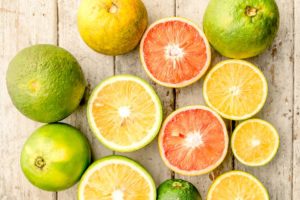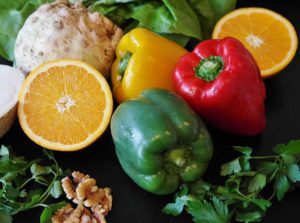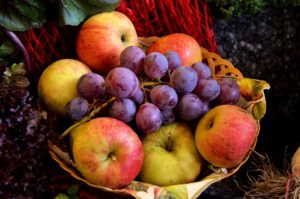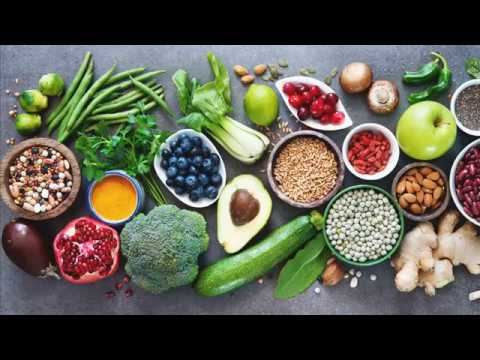Exploring the Role of Fruits and Vegetables in Managing Endometriosis: A Comprehensive Guide
Nature’s color palette: fruits and vegetables – a natural remedy for endometriosis.
Numerous studies have demonstrated the effectiveness of fruits and vegetables in reducing inflammation and alleviating pain associated with endometriosis. These benefits extend beyond endometriosis and apply to chronic diseases and pain conditions influenced by inflammatory processes. Fruits and vegetables, rich in essential vitamins, trace elements, and minerals, reinforce the immune system. Combined with secondary plant compounds such as colorants and flavorings, they also positively influence hormonal regulation.
Fruits and Vegetables Reduce the Risk of Endometriosis
Incorporating fruits and vegetables into your diet can reduce the risk of developing endometriosis. A comprehensive study in the United States revealed that women who consistently consume a minimum of 5 servings of fruits and vegetables per day have an 18% lower risk of developing endometriosis compared to those who have less than two servings daily [3].
Interestingly, this study also highlights the importance of your specific fruits and vegetables. Notably, there is a surprising finding: Women who consume a significant amount of cabbage face a 13% higher risk of developing endometriosis. The reasons behind this unexpected effect of cruciferous vegetables on endometriosis risk remained unexplored. Other vegetables, including cauliflower, broccoli, corn, peas, and lima beans, also demonstrated substantial adverse effects on endometriosis risk [3].

Citrus fruits are particularly effective in endometriosis.
Conversely, citrus fruits have proven to be particularly effective in reducing the risk of endometriosis. Women with at least 1 serving of citrus fruit in their daily diet experience a 22% lower risk of developing endometriosis [3]. Among the various citrus fruits, oranges, in particular, have shown remarkable positive effects. This beneficial impact is attributed to the notably high levels of vitamins A and C found in citrus fruits, which are believed to be crucial in lowering the risk of endometriosis.
Vitamins A, C, and E: Targeted Effectiveness
In the context of endometriosis, the body undergoes metabolic changes that result in heightened oxidative stress [8]. Oxidative stress is an inherent process characterized by cell damage, triggered inflammatory responses, and accelerated aging. Free radicals are pivotal in intensifying these processes. However, antioxidants, a well-known attribute of vitamins, can effectively counteract these mechanisms, shielding cells from harm and fortifying the immune system. Vitamins A, C, and E have shown remarkable efficacy in addressing endometriosis.
A specific study concentrating on vitamins E and C demonstrated a 43% reduction in chronic endometriosis-related pain within eight weeks, achieved by simply increasing the intake of these two vitamins [5]. Furthermore, blood tests conducted during this study revealed a significant decrease in inflammatory markers compared to the study’s outset, underlining the potential of these vitamins in mitigating endometriosis-related symptoms.
Vitamin C’s Multi-Faceted Benefits

Peppers have more vitamin C than citrus fruits.
Vitamin C’s impact reaches beyond just addressing common colds. Research suggests that an excessive proliferation of endometrial tissue, a characteristic of endometriosis, may be stimulated by free radicals. This process can be mitigated by maintaining a high vitamin C intake [5]. Vitamin C plays a role in countering these free radicals and contributes to accelerated wound healing and inflammation reduction [1]. Studies indicate that taking vitamin C as a dietary supplement does not yield the same positive effects. This suggests that the beneficial influence of vitamin C may not be intricately linked to its natural presence alongside secondary plant compounds found in fruits or vegetables.
These secondary plant compounds, including bitter substances, colorants, tannins, and fragrances, interact naturally with vitamins within fruits or vegetables, creating a synergy that promotes health [2]. As a result, vitamin tablets, which contain vitamins, trace elements, and minerals in isolation, without these accompanying secondary plant compounds, may not provide the same benefits in this context.
In addition to citrus fruits, several other sources rich in vitamin C include domestic sea buckthorn, blackcurrants, peppers, kale, and strawberries. On the other hand, vitamin E, which is fat-soluble, is primarily found in oilseeds like sunflower seeds and nuts.
Vitamin A: Beyond Eye Health

The main thing – bright red, yellow, orange or green!
Vitamin A is crucial in regulating various internal processes, including cell growth, immune system function, and inflammatory responses. Increasing your intake of vitamin A can have a significant impact on controlling cell growth, mitigating inflammation, and fortifying the immune system. In endometriosis, vitamin A has assumed a special significance [6]. It regulates cell growth, maintains the healthy structure of bodily tissues, and normalizes the production of estrogens, the female sex hormones. When these hormones are overproduced, it can result in excessive growth and increased blood flow to the endometrium.
Vibrantly colored vegetables are excellent sources of vitamin A and should be part of your diet. Look for vegetables in shades of red, yellow, orange, or deep dark green, such as carrots, squash, peppers, tomatoes, spinach, and apricots.
It is worth noting that some vitamins, like A and E, are fat-soluble and require dietary fat for optimal absorption. However, since most diets naturally contain some fat, that is a minor consideration in meal preparation.
Harnessing the Power of Plant Pigments

The more colorful, the better! Colorful fruits and vegetables help with endometriosis.
Secondary plant compounds, including those responsible for the vibrant hues in fruits and vegetables, possess remarkable antioxidant properties. They can thwart inflammation and protect against cancer. In the context of endometriosis, specific secondary plant substances have demonstrated their positive impact: yellow plant pigments like isoflavones, dark and red plant pigments such as lignans, blue, violet, and red plant pigments, including flavonoids like anthocyanins, and red-orange to yellow pigments like carotenoids. The rule of thumb is clear: the more colorful, intensely colored, and diverse your selection of fruits and vegetables, the better it is for managing endometriosis [3].
Moreover, certain compounds like resveratrol, found in grapes, raspberries, plums, and even peanuts, have been studied individually [2]. An increased intake of this phytochemical has exhibited promising results, including a reduction in the size of endometriotic growths, decreased inflammation, and the inhibition of new foci growth. It is important to note that while these findings are encouraging, they are primarily based on studies conducted in rats.
The Impact of Nutrients on Well-Being
Insufficient intake of essential nutrients can contribute to discomfort, affecting vitamins A, C, and E and other vital vitamins and trace elements. This deficiency amplifies oxidative stress, weakens the immune system, and fosters inflammation. Notably among these are:
- Folic acid (vitamin B9 / B11)
- Zinc
- Selenium
These elements function as antioxidants or support the body in producing enzymes that counteract inflammation and minimize cellular damage caused by oxidative stress.

Minerals and trace elements promote well-being in endometriosis.
Folic acid, a member of the B vitamin family, is rich in fresh, green vegetables like spinach, cress, asparagus, and parsley and legumes such as lentils, tomatoes, blackberries, and oranges.
Zinc, an essential trace element, not only bolsters the immune system but also plays a role in hormone production. Zinc-rich foods include lentils, white beans, soybeans, and corn, as well as cheese, oatmeal, and various nuts.
Selenium, another trace element, is crucial in preventing cellular damage from oxidative stress. It combats free radicals, safeguarding cells from harmful processes. While selenium is indispensable, it can become toxic if overconsumed through supplements. This element is not synthesized in fruits and vegetables but instead stored in them, and its content in produce varies depending on soil selenium levels. Notably, garlic, Brazil nuts, and cabbage are effective selenium accumulators.
Please only choose ‘organic’

Agricultural toxins could promote the development of endometriosis.
Another critical factor to consider when consuming fruits and vegetables is prioritizing those from certified organic cultivation. An impressive study [7] demonstrated that increased consumption of conventional, non-organic fruits yielded no health-promoting benefits. It revealed that the adverse effects of plant protection agents like pesticides, herbicides, and fungicides could potentially counteract any positive effects. There is also a suspicion that these agricultural toxins may contribute to developing conditions such as endometriosis and uterine fibroids.
Fruits and Vegetables for Managing Endometriosis: More Is Better!
Extensive research provides clear evidence that increasing the consumption of fruits and vegetables, especially those rich in antioxidants like vitamins A, C, and E, or substances that promote antioxidant processes such as plant pigments, zinc, selenium, and folic acid, can be highly beneficial for managing endometriosis. One study, for instance, demonstrated a 43% reduction in chronic pain by simply incorporating more vitamin C and E-rich fruits and vegetables into one’s diet [5]. This result alone should be a compelling reason to include them more regularly.

In summary, here are some vital dietary guidelines for managing endometriosis:
Aim for at least 5 servings of fruits and vegetables daily.
- Opt for a variety of colorful fruits and vegetables.
- Give preference to citrus fruits.
- Be cautious with cabbage, corn, and peas.
- Choose organic fruits and vegetables whenever possible.
By following these straightforward rules, you can significantly enhance your overall well-being, reduce pain, and alleviate inflammation associated with endometriosis.
References
- Finding the Perfect Nutritionist: A Step-by-Step Guide - 5. October 2023
- Does Monk’s Pepper Help with Endometriosis? - 5. October 2023
- A Brief Overview of Dietary Fats - 29. September 2023

